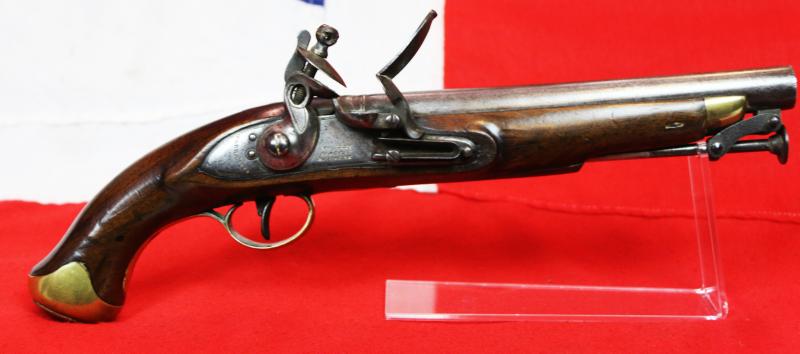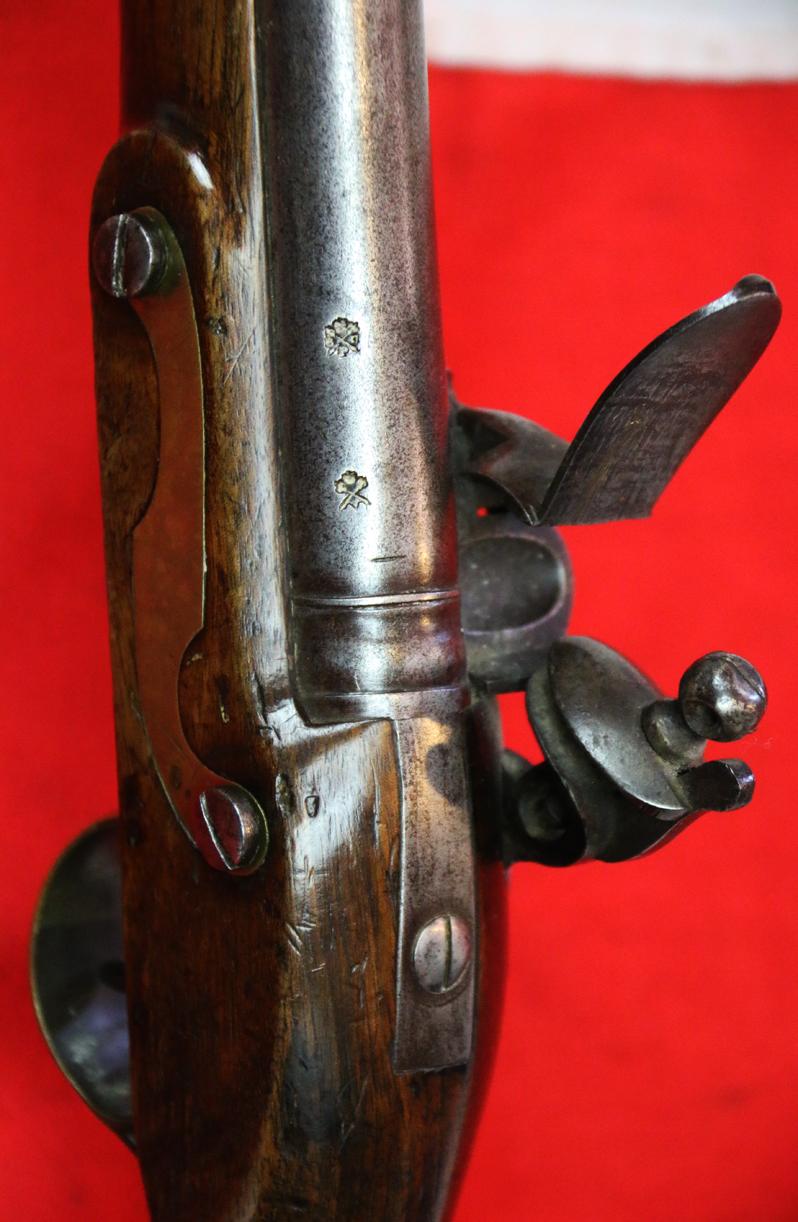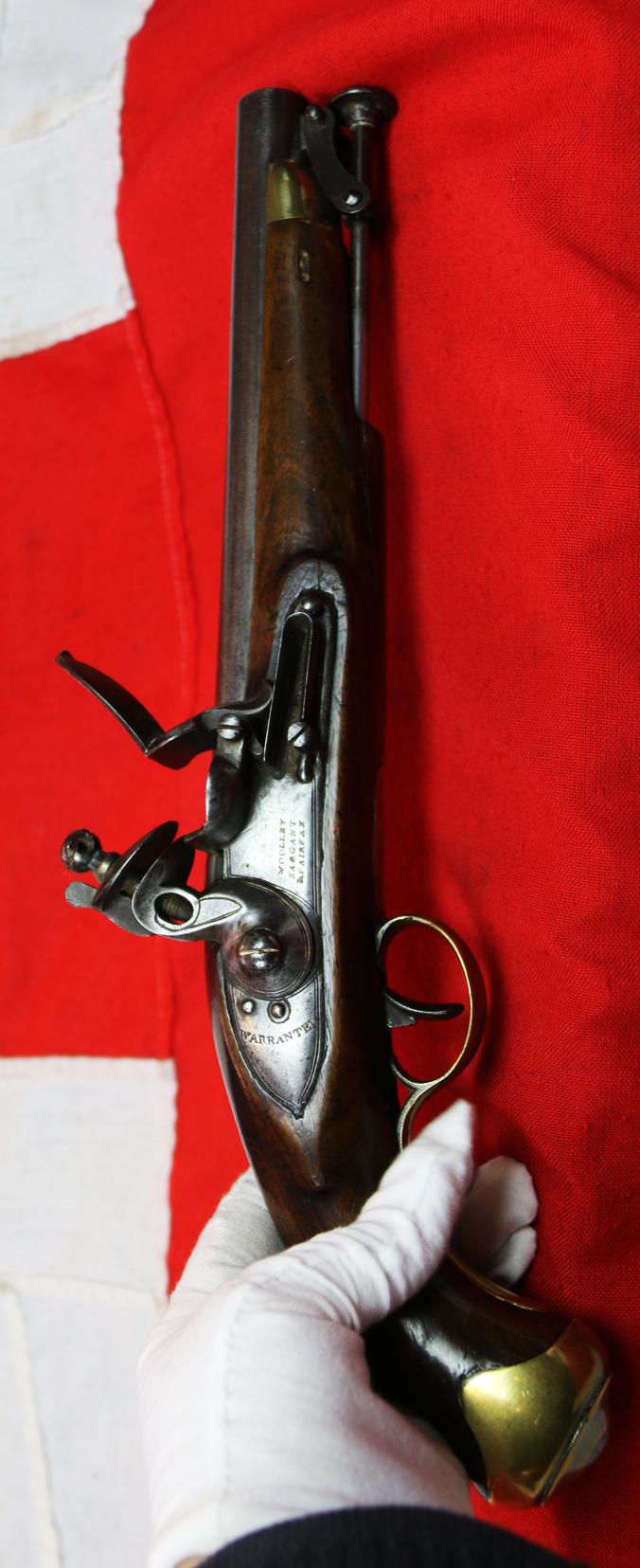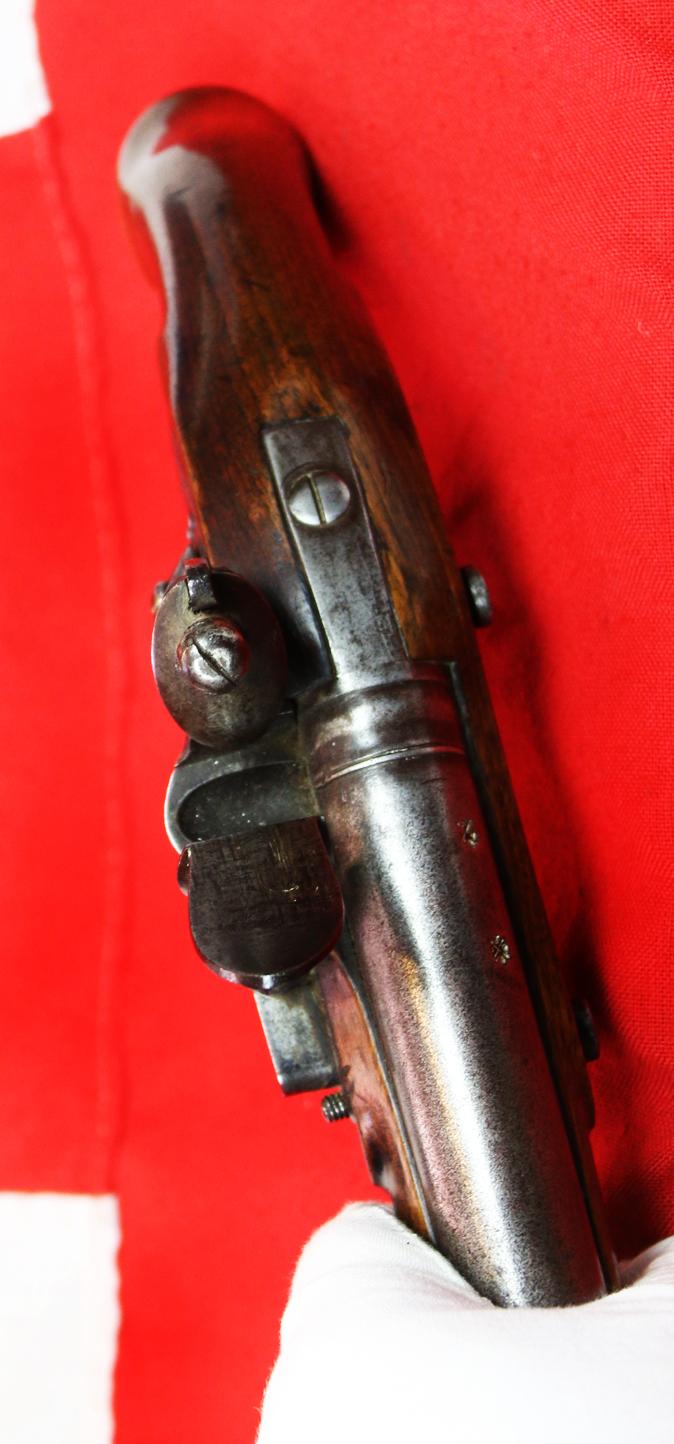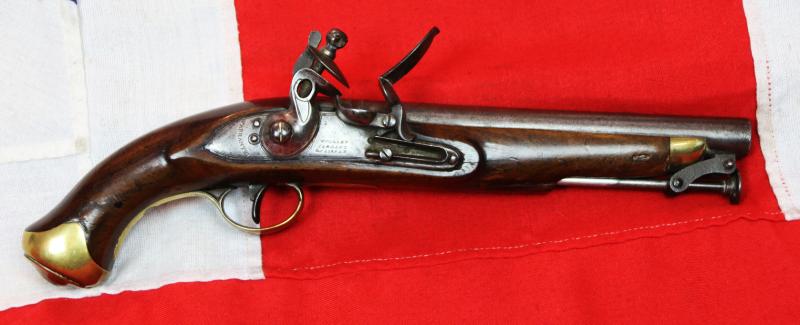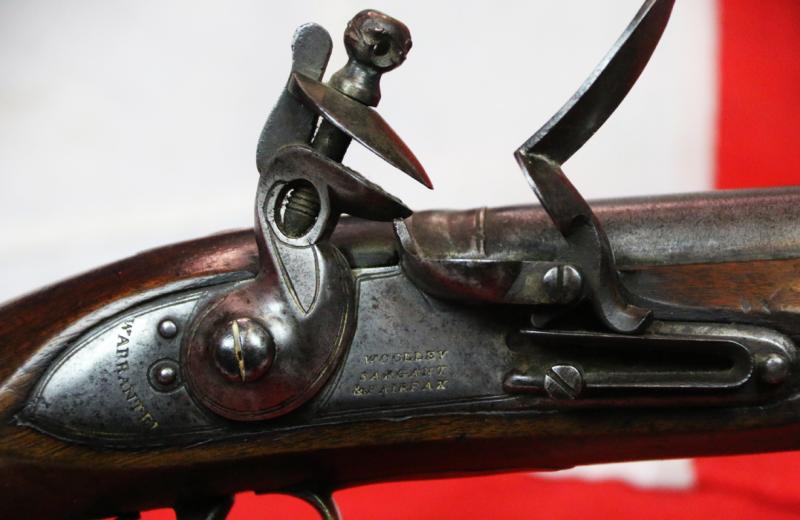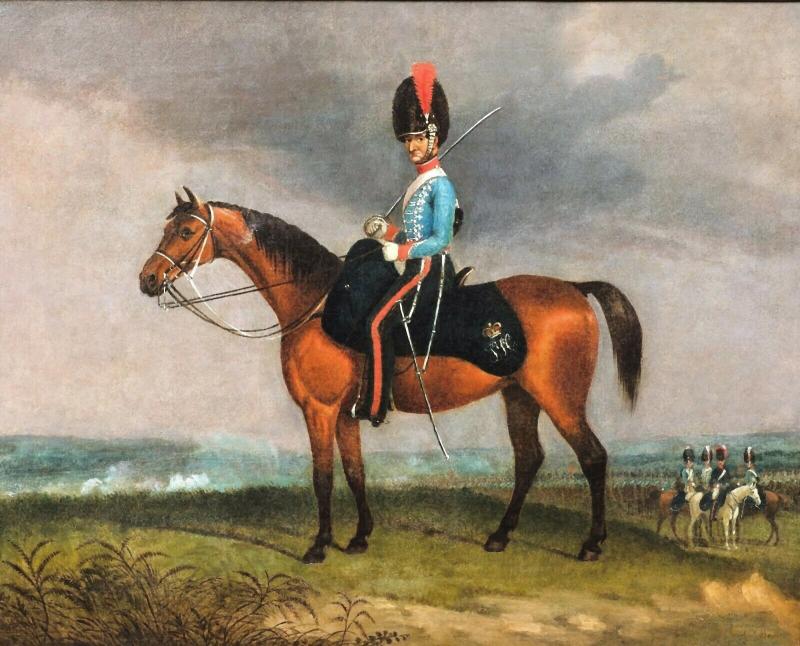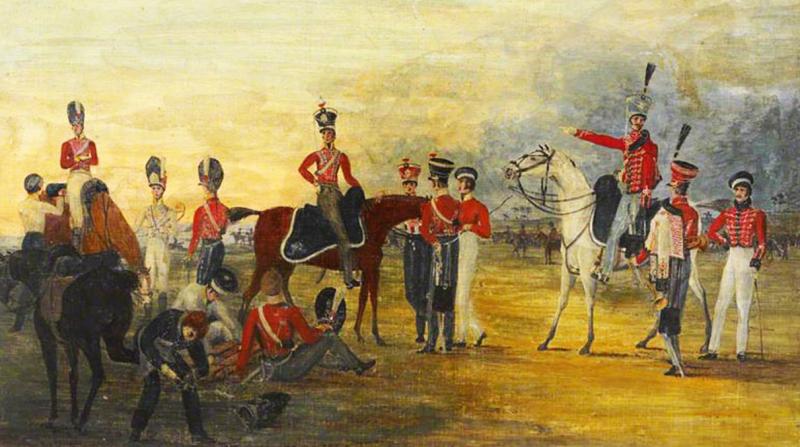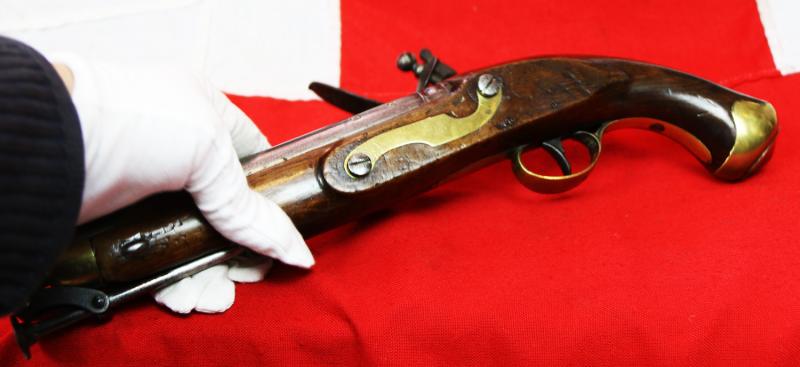A Simply Superb King George IIIrd British Light Dragoon Flintlock Pistol In Exemplary Condition Almost Beyond Compare
Excellent walnut stock with original patina to all parts steel brass and walnut. All fine brass fittings and captive ramrod. In original flintlock, made by a good ordnance and militia contractor from Birmingham.
This is the pattern of pistol for use by British Light Dragoon & Hussars Cavalry regiments, and called the New Land Pattern, used intially from around 1802, during the Peninsular War, the War of 1812, and the Hundred Days War, culminating at Waterloo. This pistol was used later up to the early 1840's when the ordnance transferred to the use of percussion arms. One would have to go a long way and for a considerable time to find another example in such good condition and as good quality as this one. it is simply a museum grade and condition example likely impossible to improve upon. Introduced in the 1796 and in production by 1802, the New Land Cavalry Pistol provided one model of pistol for all of Britain's light cavalry and horse artillery. Another new element was its swivel all steel ramrod, which greatly improved the process of loading the pistol on horseback and ensuring no loss of ramrod due to miss-handling or dropping..
The service of British Cavalry regiments, particularly the Light Dragoons, proved essential in the mastery of the Indian Subcontinent. The Duke of Wellington, then Arthur Wellesley, was primarily recognized for his military genius by his battles in India. Of particular note was the Battle of Assaye in 1803 where the 6000 British faced a Mahratta Army of at least 40,000. During the engagement the 19th Light Dragoons saved the 74th Regiment by charging the enemy guns 'like a torrent that had burst its banks'. Pistols firing and sabre slashing, the 19th broke the enemy's position and the day was won. 19th Light Dragoons gained "Assaye" as a battle honour, and the nickname "Terrors of the East". The 19th Light Dragoons eventually served in North America during the War of 1812 and so did this form of pistol. Cavalry was the 'shock' arm, with lance and sabre the principal hand weapons. The division between 'heavy' and light was very marked during Wellington's time: 'heavy' cavalry were huge men on big horses, 'light' cavalry were more agile troopers on smaller mounts who could harass as well as shock.
During the Napoleonic Wars, French cavalry was unexcelled. Later, as casualties and the passage of years took their toll, Napoleon found it difficult to maintain the same high standards of cavalry performance. At the same time, the British and their allies steadily improved on their cavalry, mainly by devoting more attention to its organization and training as well as by copying many of the French tactics, organization and methods. During the Peninsular War, Wellington paid little heed to the employment of cavalry in operations, using it mainly for covering retreats and chasing routed French forces. But by the time of Waterloo it was the English cavalry that smashed the final attack of Napoleon's Old Guard.
Hussar Yeomanry regiments were light cavalry units, primarily composed of mounted volunteers, who served as part of the British Army reserve. They were known for their distinctive uniform, which often included a pelisse (a short fur-edged jacket). These units, like the Yorkshire Hussars and the Queen's Own Worcestershire Hussars, were formed in response to the French Revolutionary Wars and served in various roles, including policing, reconnaissance, and fighting as light cavalry
They were primarily used as light cavalry, meaning they were mounted on fast horses and used for skirmishes, scouting, and reconnaissance.
The Yeomanry was considered an auxiliary force, meaning it supplemented the regular army, rather than replacing it, County-Based
As with all our antique guns no license is required as they are all unrestricted antique collectables
Code: 25757
2135.00 GBP

